GIGABYTE BRIX Pro: A Second Look at the Intel i7-4770R with Iris Pro HD 5200
by Ganesh T S on June 14, 2014 5:00 PM ESTThermal Performance & Power Consumption
A discussion of the cooling system, fan speeds and subjective noise levels can be found in the first part of our BRIX Pro review. A couple of months back, GIGABYTE came forward with a new BIOS for the BRIX Pro. After installing that, we repeated our extreme power virus test of running Prime 95 and Furmark together at the same time. As expected, the system did throttle within two minutes of starting the test (as shown in the screenshot below).
I am yet to see a system equipped with a Core i7-4770R that has been able to keep up with the CPU and GPU being loaded up simultaneously, and manufacturers contend that it is hardly a realistic use-case. While we tend to agree to a limited extent, we felt it would be worthy of further evaluation. Towards this, we kicked off a run with only Prime 95 loading up all the CPU threads.
After 30 minutes of full CPU loading, we found that the core temperatures were held below 100 C, the clock speeds remained at 3.2 GHz for the CPU (the GPU was 'idling' at 200 MHz) and there was no thermal throttling to be seen. At this point, we introduced Furmark loading into the picture. It becomes clear that the system gives preference to CPU performance. The GPU remains throttled at 200 MHz, while the CPU cores don't thermally throttle.
This is quite a relief, as there are probably no realistic workloads out there which can stress both CPU and GPU to the maximum simultaneously. To verify whether GPU performance perks up after removal of CPU load, we stopped the Prime 95 job and let Furmark continue for more time.
After more than 45 minutes, we found the GPU still clocking in at 1 GHz and running without any throttling issues. The CPU cores were idling at 800 MHz.
On the whole, thermal performance seems to have improved quite a bit with the latest BIOS release and we are actually happy to see that CPU performance just doesn't throttle as long as the GPU doesn't simultaneously ramp up with the CPU.
In terms of power consumption, we gathered the idle and load power numbers (at the wall) with the new configuration. The numbers are presented below.
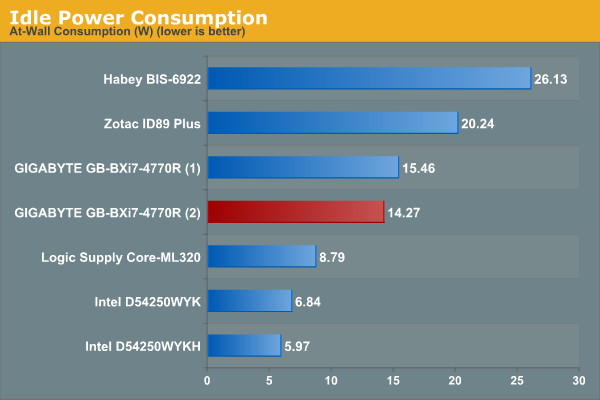
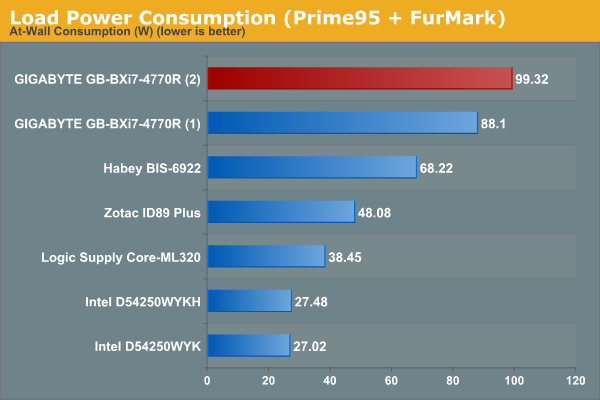
The numbers vary slightly from our initial configuration (more efficient at idle, but consumes more power at load), and I believe these related to the BIOS update as well as the memory and storage subsystem changes.


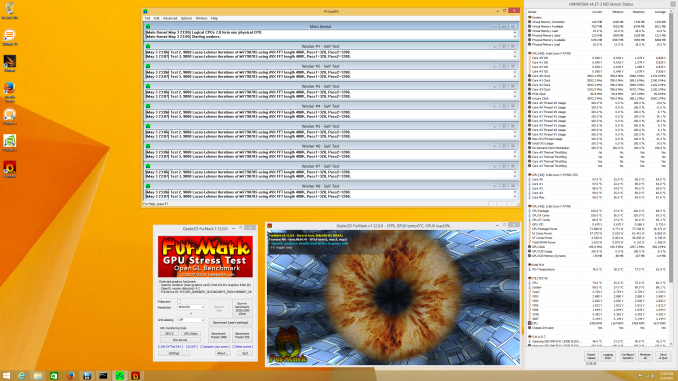
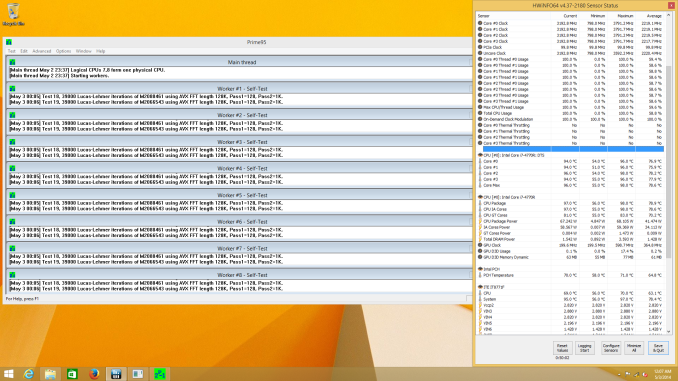
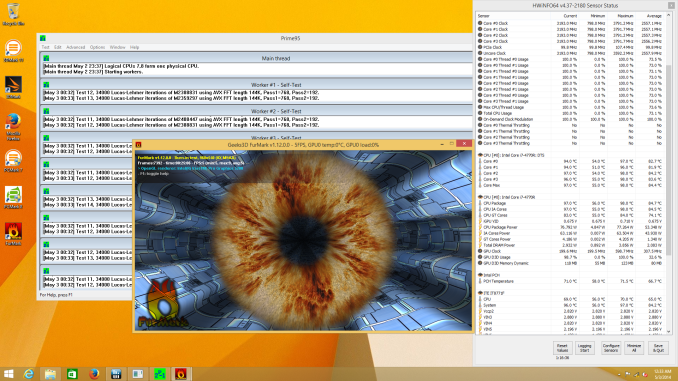
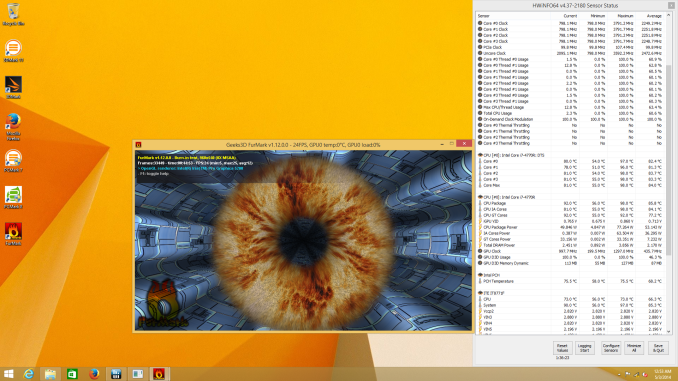








55 Comments
View All Comments
basroil - Sunday, June 15, 2014 - link
Lets put some kinect fusion data in there, this computer is basically begging to be put on a robot!TomWomack - Sunday, June 15, 2014 - link
Do you know of any company planning to release an i7/4770R on a board which can be put into a reasonably-cooled box, rather than in a size-optimised cooling-constrained one?Qwertilot - Sunday, June 15, 2014 - link
No idea. It does sound a bit like Broadwell K should basically do that when it rolls around though.(While presumably performing better too.).
duploxxx - Monday, June 16, 2014 - link
Would really be interested in putting some AMD based solutions next to that, for sure on the very high price of that box.Secondly you clearly see that high res is impossible to play on iris due to the low eDRAM size. so you can say that AMD APU parts really need high speed memory, but you know that the iris pro will never make it for high res even with better memory. so it fails in delivering future.
duploxxx - Monday, June 16, 2014 - link
if you combine a few reviews and look at the Kaveri launch then the 4770R with edram intel part delivers the gpu performance of the same A8-7600 at the same 65W package but probably 3x more expensive... so you don't need to buy this box for gaming, you are better of with the AMD part.JBVertexx - Monday, June 16, 2014 - link
Would like to have seen benchmarks vs. an A10-7850k based build.Hrel - Monday, June 16, 2014 - link
Considering you can make a good gaming rig with a AMD R7 265 for $500 it makes no sense at all to buy a system with an Intel IGP for anything more than $500. Yes, with the Brix platform you get something nicely compact, which is why it's worth the SAME as a good gaming rig that's larger. But it's certainly not worth MORE!isa - Monday, June 16, 2014 - link
First, I LOVE the comparative PC config table with pulldown selection - very effective and efficient comparison method.Second, I think mini-ITX PCs look really, really interesting with a Broadwell CPU (fewer heat issues) and m.2 pcie x4 slot (smaller, better air flow, better overall perf). If the writer has any influence with makers of such PCs and you agree, it would be great if such PCs retained the 2.5in drive slot when m.2 is added. Such a PC gets pretty close to ideal for many uses.
Lastly, I agree (if I understood it correctly) that increasing the case height is just fine if needed - keep the footprint the same but going higher would work well in anything I need.
isa - Monday, June 16, 2014 - link
Ooops: I screwed up: these PCs aren;t mini-ITX, since these motherboards are about 4"x4", and mini-ITX is about 6.7"x6.7". But I can't find anything on what to call this motherboard form factor other than "NUC-like". Anyone have a better term for these motherboard form factors?Redstorm - Monday, June 16, 2014 - link
No mention of the broken de-interlacing on the iGPU under linux. Intels devs cant even get it working in the driver. If you want to use one as a HTPC under linux and XBMC your stuck with software de-interlacing as the iGPU is borked.